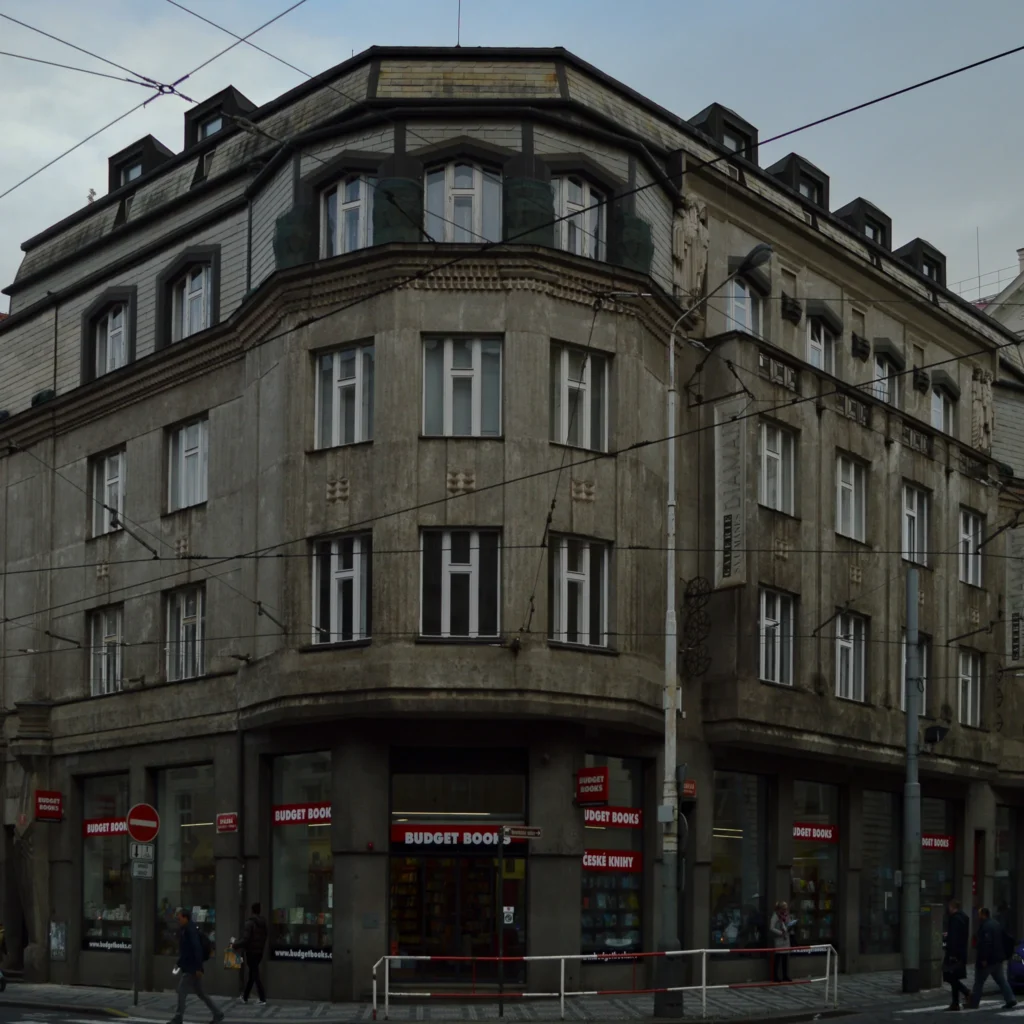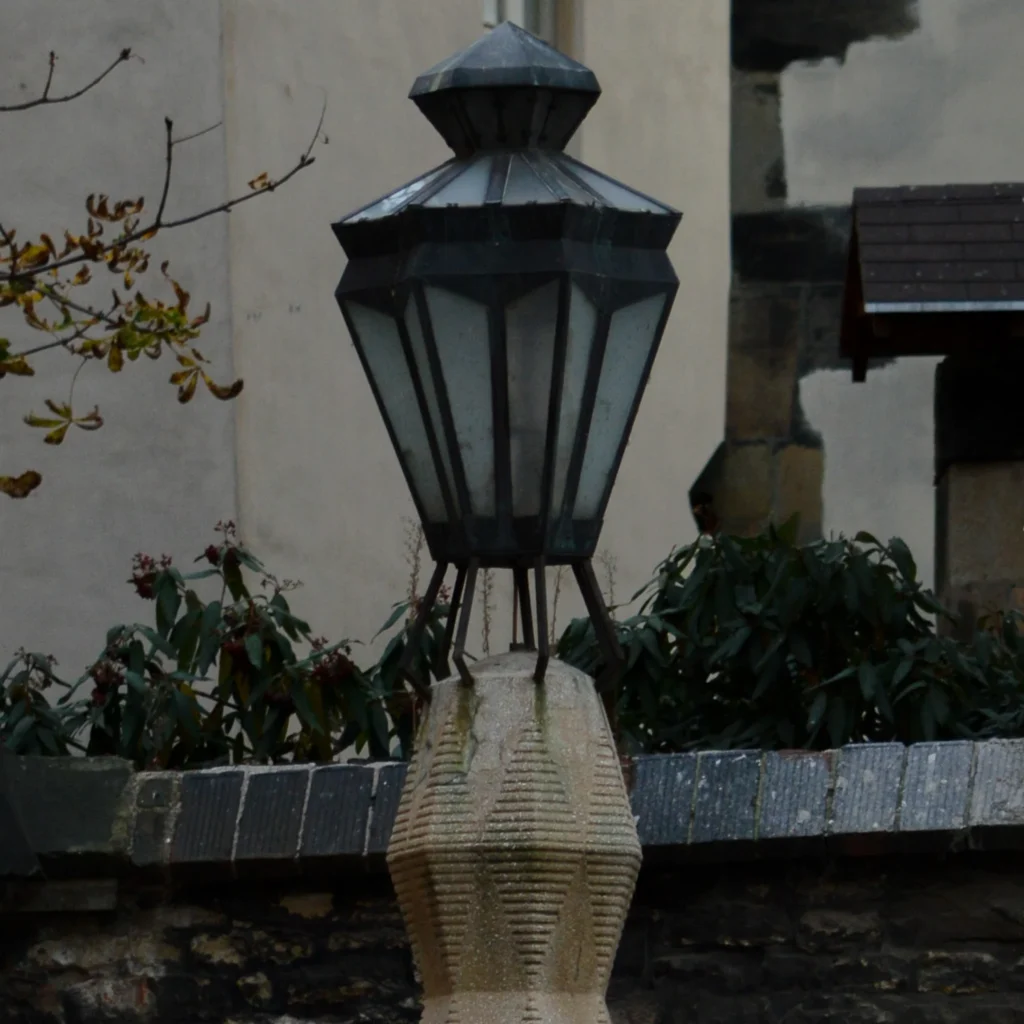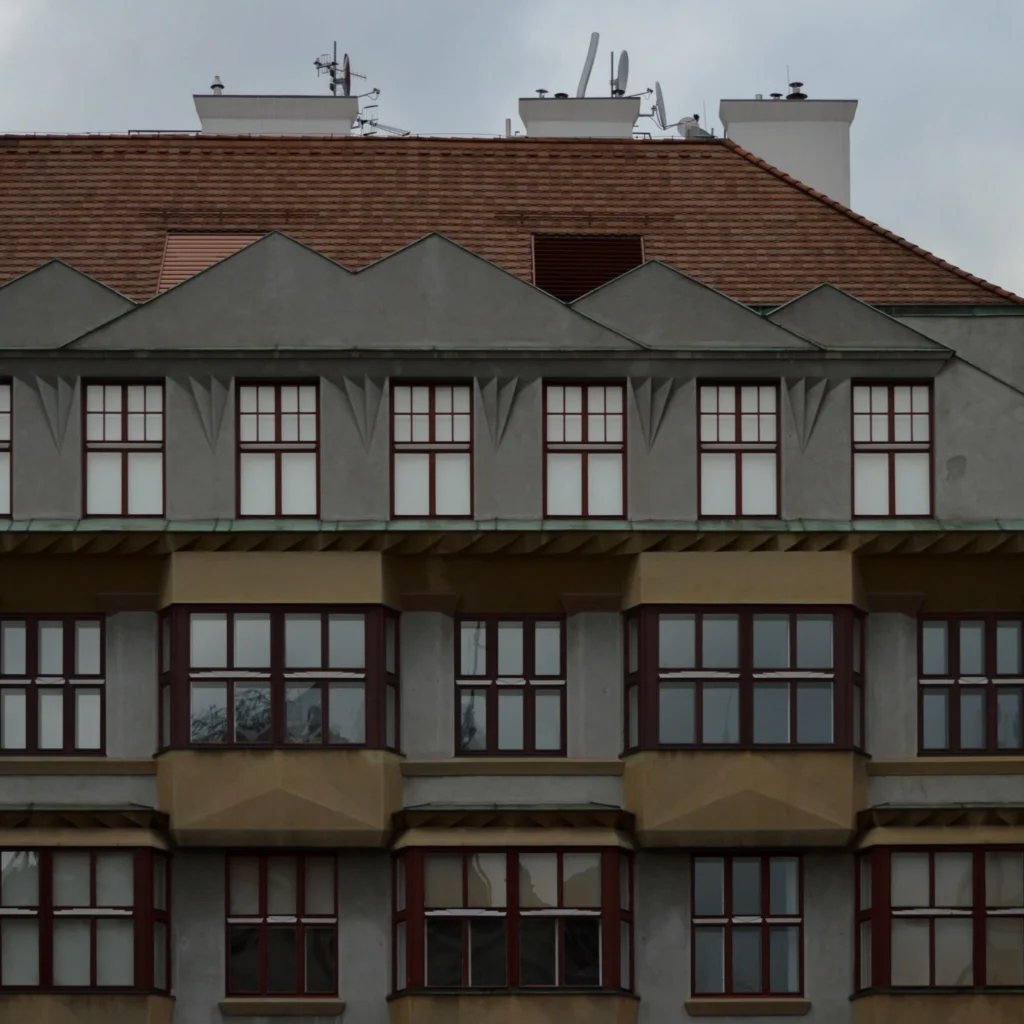Cubist route
If Paris is the cradle of cubism in fine art, then Prague is its cradle in architecture. While paintings composed of prisms and pyramids conquered the world, plastic facades with sharp edges did not cross the borders of Czechoslovakia. As a result, they have become one of the few Czech architectural wonders that attract visitors from all over the world to Prague. However, cubism did not always have an easy path. Its representatives came to the conclusion that architectural Impressionism and Art Nouveau no longer had anything new to offer to the world. Their aim was to express the needs of the new Czech architecture in a simple and abstract way, inspired by the dynamic forms of Pablo Picasso and the perspective of Georges Braque. Architects started with simple sketches of crystals, pyramids, facade designs, and ornamental gables. However, paradoxically, the resulting structures were not met with great success. They were deemed too eccentric, impractical, and expensive. Although this architectural style came to an end with the onset of the First World War and lasted only a few years, we can still be enchanted by the plasticity of individual facades, observe the interplay of light and shadow upon them, and, at least for a moment, be transported into the world of geometric planes, crystals, and diamonds.
Info about road
Duration: 48 min
Number of stops: 6+3
Lenght: 3,8 km
MHD start: Výtoň
MHD end: Náměstí republiky
Cubist triplets
Architect: Josef Chochol
Year of completion: 1913
The largest cubist achievement by architect Chochola became the home of three prominent entrepreneurial families of Prague at that time, and due to its scale, it can resemble a magnificent palace. The cubist three-house complex is also nicknamed the Cubist Triplets, and its facade is adorned with sharp edges and plastic cubist elements that extend to the design of windows and doors. At the beginning of the 20th century, the owners reportedly wished for a more flamboyant façade and therefore, after several years, a relief depicting scenes from Czech legends and myths was added to the facade of the central part. Its authorship is attributed to sculptor Ladislav Křtina.

Kovařovic’s villa
Architect: Josef Chochol
Year of completion: 1913
Behind the low, jagged fence near the Vltava River stands the Kovařovic Villa, a cubist masterpiece since 1913. It is situated on a triangular plot of land shared with the modernist Sequenses Villa designed by Otakar Novotný and the Art Nouveau Na Libušince Villa by Emil Králíček, which features several cubist details. Architect Josef Chochol spared no effort in incorporating cubist elements into the design of the Kovařovic Villa, both in its facade, fencing, and interior details such as doorknobs and railings. When viewed from Libušina Street, where the main entrance is located, the villas form a continuous strip, and towards the river, they open up to a shared garden. Access from the gardens is also possible and even more impressive than from the street.

Rental house in Neklanova street
Architect: Josef Chochol
Year of completion: 1914
The building on Neklanova Street is characterized by its pointed corner, a facade filled with sharp edges, and windows and doors of atypical shapes. The architect further emphasized the plasticity of the facade with white plaster, which highlights the play of light on the inclined polygonal surfaces. The entire mass of the structure is dominated by a corner column with a crown made of sharp crystals, accompanied by openworked balconies. This detail, along with the overall appearance of the facade, may evoke the aesthetics of certain Gothic cathedrals that the architect drew inspiration from. Additionally, Chochol referred to the pentagonal bastions of the baroque fortress at Vyšehrad in his design. A similar motif can be found on the Kovařovic Villa as well.

The Diamond house
Architect: Emil Králíček
Year of completion: 1913
Originally designed by architect Ohmann, the project envisioned a neoclassical Art Nouveau building. However, during the construction process, Emil Králíček took over and decided to be inspired by the prism-like forms emerging in the new Cubist movement. As a result, the modern Diamant House is abundant in geometric shapes that extend to its sculptural decoration and interior elements such as lamps, chandeliers, railings, doors, and etched window panes. Králíček’s architecture also harmoniously connects with the adjacent baroque Church of the Holy Trinity, as he incorporated a very unconventional element in the form of a Cubist arch, which serves as a roof for a sculpture of St. John Nepomuk dating back two centuries to 1717.

Cubist lamp
Architect: Emil Králíček
Year of completion: 1913
A successful example of the fusion of geometric Art Nouveau and Cubism is the building of Adamova Pharmacy on Wenceslas Square, in which architect Emil Králíček was involved. In close proximity to this building, there is a purely Cubist work by the same architect. The construction company Matěj Blecha, for which Králíček was working at the time, was tasked by Prague to enhance the adjacent area of the pharmacy, leading the architect to create a unique Cubist work made of artificial stone, metal, and glass. This work is a Cubist lamp, which is a global rarity. The lamp column is adorned with smooth and grooved triangles, creating a sense of plasticity. The sharp edges also characterize the lantern itself.

The Black Madonna house
Architect: Josef Gočár
Year of completion: 1912
The very first Cubist building in Prague was originally constructed as a department store with a café on the site of a demolished Baroque building. Only the Black Madonna, which gave its name to the new structure in 1912, remains and can still be seen behind a golden grille on the building’s corner. The facade is adorned with a grand entrance featuring a grille, balconies, and corner bay windows – all in a distinctive Cubist design. Architect Josef Gočár is also responsible for the interiors of the building, including the café on the first floor. However, over the years, the spaces of the Grand Café Orient underwent various renovations, and it was not until the beginning of the new millennium that they were successfully reconstructed based on period photographs. It is likely the only Cubist café in the world. Inside, visitors can enter through a unique staircase with the atypical shape of a light bulb.

Stops out of the road
Teachers’ Houses at Old Town
Architect: Otakar Novotný
Year of completion: 1921
In the vicinity of the brutalist Intercontinental Hotel, in Eliška Krásnohorská and Bílkova streets, lies a complex of Cubist houses often referred to as the last great Cubism in Prague. They were built at the initiative of the Cooperative for the Construction of Teachers’ Houses, and the architect behind them was Otakar Novotný, a student of Jan Kotěra. Novotný is known for the nearby Štenc House, inspired by Dutch architecture, as well as the functionalist Mánes Building. The complex in Bílkova consists of two terraced houses and one corner house. All the buildings have four floors, with a fifth attic floor topped with gables in diamond and triangular shapes. The dynamic elements of the facade, along with its unconventional dual-color scheme, place the ensemble in the late Cubist period. In addition to the facade, smaller details such as discreetly designed gutters and portals with Cubist soffits and entrance grilles also catch the eye.

AVU School of Architecture
Architect: Jan Kotěra, Josef Gočár
Year of completion: 1924
The School of Architecture at the Academy of Fine Arts (AVU) is the result of the gradual work of several renowned architects. The single-story building with a pointed roof was built next to the original building of the Academy of Fine Arts in 1910. At that time, it was a realization by Jan Kotěra, the founder of Czech modernism in architecture, who felt the need to create a suitable environment for the education of future architects. Ten years later, the modern single-story building with an attic and a distinctive Cubist-style portal received a second floor, which was the work of Kotěra’s student, Josef Gočár. The extension exhibits characteristics of functionalism, such as the glazed roof studios. From the mid-20th century, the school underwent further modifications, involving architects such as Jaroslav Fragner, František Cubr, and the long-standing professor Emil Přikryl. The complete reconstruction of the building, which took place between 2018 and 2020, was carried out by Marcela Steinbachová and the Skupina studio.

Ďáblice cemetary
Architect: Vlastislav Hofman
Year of completion: 1914
The Ďáblice Cemetery is the second largest cemetery in Prague and the only Cubist cemetery in the world. Although not all of Vlastislav Hofman’s original designs were realized, his artistic signature can be recognized in many small structures within the complex. The enclosing wall, the entrance gate with two pavilions, and the furnishings all exhibit Cubist design elements. The unique architectural style stands in contrast to the somber history of the cemetery, as it is the final resting place for victims of both world wars and individuals who were tortured and killed by Nazis and Communists. In 2017, the Dáblice Cemetery was declared a national cultural monument, and twelve years prior, a new ceremonial hall was constructed in the Cubist style, designed by architect Marie Švábová, paying homage to Hofman’s Cubist aesthetic.
